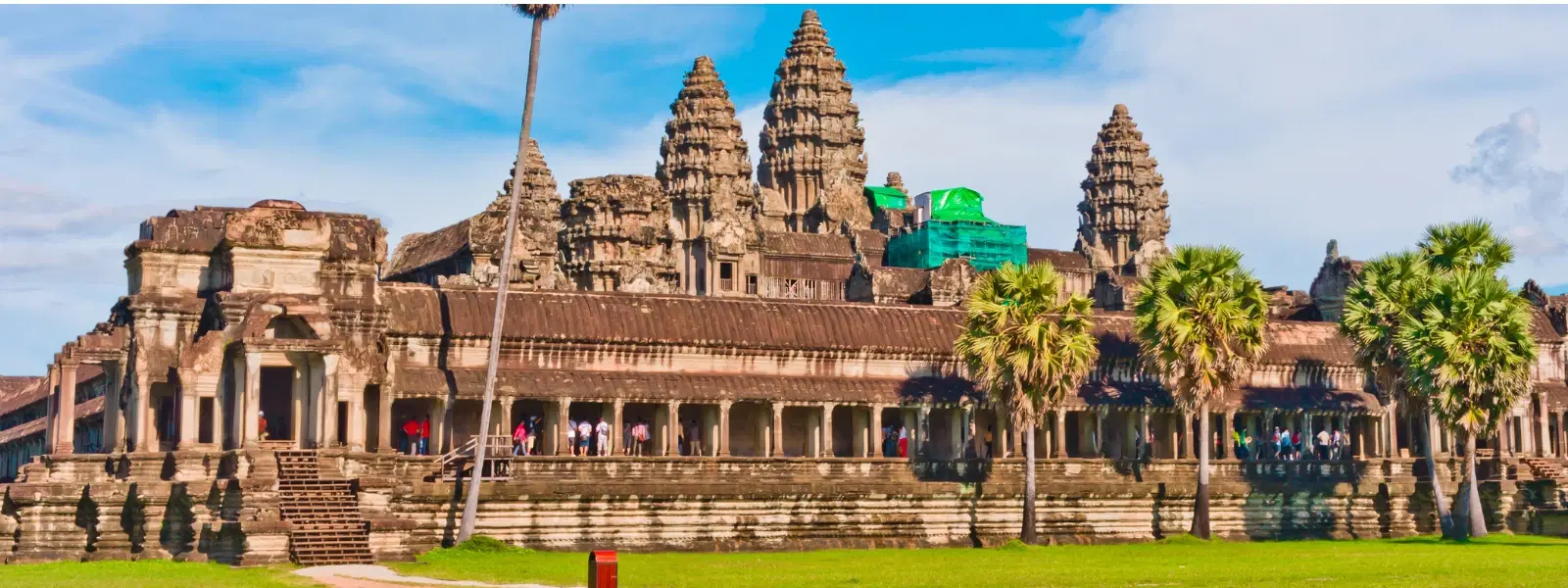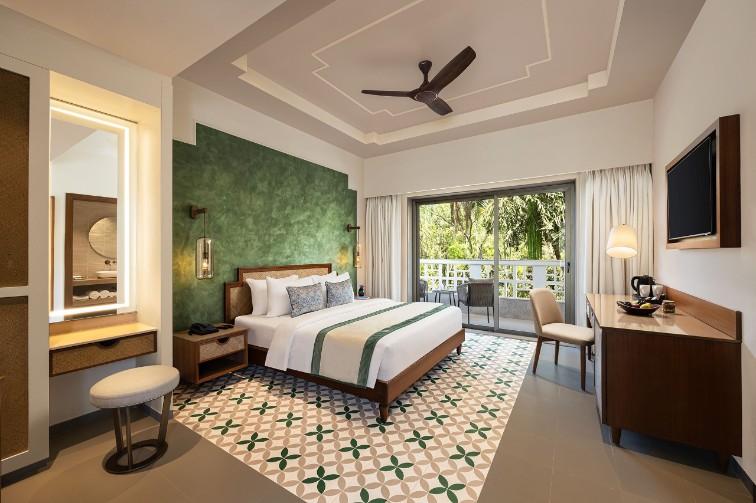
Hotels
•06 min read

Angkor Wat, a marvel of ancient architecture and a symbol of Cambodia’s rich history, has an allure that transcends time. Choosing the right time to visit this magnificent temple complex can transform your travel experience, ensuring pleasant weather, manageable crowd levels, and the chance to witness cultural events at their best. In this guide, we delve into the seven best months to visit Angkor Wat, covering everything from local weather insights and tourist seasons to travel tips and accommodation advice. Prepare to discover how to optimize your journey through the heart of Cambodia.
Cambodia's tropical climate is characterized by two main seasons: the dry season and the rainy season. The dry season, typically running from November to April, is marked by cooler and sunny days—a welcome relief for those exploring the vast temple complex. Conversely, the rainy season, which spans from May to October, brings frequent showers and higher humidity levels, which can sometimes hinder long hours of exploration. Understanding the local weather patterns not only helps in planning your visit but also enhances the overall experience by allowing you to explore the ruins with comfort and ease.
The influx of visitors follows a distinct pattern at Angkor Wat. Peak tourist seasons coincide with the cooler dry months, drawing travelers who hope to avoid the sweltering heat and heavy rains. During these months, the area sees higher crowd levels, and accommodations can be booked well in advance, sometimes pushing prices upward. Shoulder seasons, however, offer a balance between favorable weather and moderate tourism, while the off-peak periods may allow a more solitary exploration, albeit with the added risk of unpredictable weather. Recognizing these patterns is essential for anyone planning a visit to one of Asia's most iconic historical sites.
The selected months for the best visit to Angkor Wat have been chosen based on three main criteria: pleasant weather conditions, manageable crowd levels, and the opportunity to engage in local events and festivities. These factors not only contribute to an ideal traveling experience but also support a smoother navigation of the extensive temple complex. Whether you're an avid photographer or a casual history enthusiast, these carefully chosen months promise a memorable journey to one of the world's greatest archaeological wonders.
November: Marking the beginning of the dry season, November offers cool temperatures and fewer tourists than the peak months. This month also brings the vibrant local flora into full bloom, creating picturesque backdrops for photography enthusiasts.
December: With pleasantly cool days and crisp mornings, December is perfect for both early risers and those looking to indulge in local cultural celebrations that often accompany the holiday season.
January: Enjoy the peak of the dry season with consistent sunny days. January is renowned for its ideal conditions—low humidity and moderate temperatures that make exploring every corner of the temple complex a delightful endeavor.
February: Similar to January, February boasts cool mornings and comfortable afternoons, making it another excellent month for an immersive exploration of ancient ruins and surrounding natural beauty.
March: While the temperatures begin to rise slightly, March still offers favorable conditions. It is less crowded than the peak winter months, proving to be a sweet spot for those seeking both good weather and quieter temples.

October: As the wet season starts to taper off, October often surprises visitors with mild weather and lush landscapes. This transitional month offers a unique chance to experience Angkor Wat in a more serene environment, with the added beauty of rejuvenated greenery around the area.
Early April: Although April is generally hot, an early visit can be rewarding. Mornings and late afternoons tend to be more bearable, and the enthusiastic early-season adventurers can explore the temple complex before the peak heat sets in.
Pro Tip for Angkor Wat Explorers
The best way to beat the crowds and heat is to start your day with a sunrise visit. Not only will you experience a magical view, but you’ll also enjoy cooler temperatures and quieter surroundings.
To fully capture the beauty of Angkor Wat and avoid the busiest periods, early mornings and late afternoons are the ideal times. Sunrise not only offers cool and pleasant weather but also provides the perfect lighting for photography enthusiasts. Late afternoon visits can be equally rewarding, with the golden hues of sunset casting a timeless glow over the temple ruins. Such timing helps you bypass the crowds and gives you an intimate experience with the ancient architecture.
Your schedule will depend on your interests and energy levels. A one-day visit is sufficient if you only wish to see the main temples, but a two- to three-day trip allows you to savor the entire experience, exploring the extensive network of temples and the surrounding landscapes at a comfortable pace. Whether you’re an avid history buff or simply looking to indulge in some leisurely exploration, planning your visit accordingly will make a significant difference in your overall enjoyment.
Siem Reap, the gateway to Angkor Wat, not only offers close proximity to the temple complex but also caters to a variety of tastes and budgets. Its vibrant market streets, local eateries, and historical sites add an extra layer of enjoyment to your overall travel experience. Many travelers prefer staying in this charming town due to its convenient location and diverse selection of hotels.
There is a rich mix of Siem Reap accommodation options, from budget-friendly guesthouses to luxurious resorts. When searching for hotels near Angkor Wat and other prime attractions, it is advisable to consider customer reviews and recommendations. Many travelers who seek out siem reap hotel recommendations find that the blend of comfort, service, and location makes Siem Reap an ideal base for exploring the treasures of Angkor Wat.
Travel during the peak months demands early planning. Booking accommodations well in advance can help avoid last-minute hassles and ensure better rates and room availability. Early reservations are strongly recommended to secure your preferred spot, especially during popular months like December and January. Being proactive not only saves time and money but also guarantees a smoother experience as you embark on your Angkor Wat trip planning journey.

Packing smartly is crucial for a hassle-free visit. Lightweight clothing is a must during the hotter months, while a raincoat or umbrella becomes essential during the transition between dry and wet seasons. Don't forget a sturdy pair of walking shoes, sunblock, and a hat to protect you from the strong tropical sun. A small daypack to store your essentials can also enhance your overall experience.
Engaging with local culture can be just as enriching as exploring the temples. When it comes to ticket purchases, it is once again beneficial to book online in advance. Respecting local customs, particularly in dress code when visiting sacred areas, goes a long way in ensuring a respectful and immersive experience. Hiring local guides not only enriches your knowledge about the temple’s history but also aids in navigating the expansive complex efficiently. These practical tips form the backbone of successful angkor wat travel tips that any visitor can appreciate.
Most travelers prefer November through February for cooler, drier weather and a more comfortable temple exploration experience.
Avoid April and May, as high temperatures can make the visit less enjoyable, with the added discomfort of peak heat during these months.
Early mornings and sunrise sessions are optimal, providing both cooler weather and ideal lighting for photography.
Depending on your interests, a visit can range from a single day for the highlights to three days to fully explore all key temples.
Siem Reap offers a variety of accommodation options ranging from economical hostels to luxury resorts, making it the perfect base for exploring Angkor Wat.
In summary, selecting the right month to visit Angkor Wat is key to maximizing your travel experience. By understanding the weather shifts, tourist seasons, and seasonal advantages such as cooler winters or calming off-peak periods, you can plan a trip that combines historical exploration with comfort. This comprehensive guide has outlined the seven best months and provided valuable travel tips, accommodation advice, and practical insights to help you navigate this ancient wonder with ease. With careful planning and the right travel tips, your trip to Angkor Wat will undoubtedly be an unforgettable journey into the past.